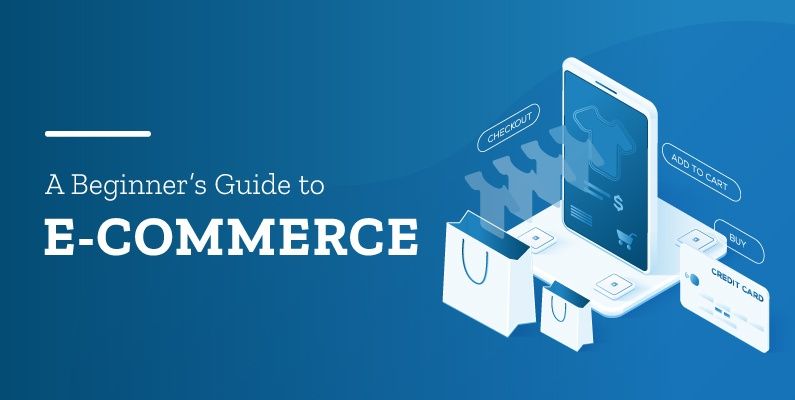E-Commerce Platforms: A Complete Guide to Explore, Learn, and Discover Key Insights
E-commerce platforms are digital systems that allow businesses and individuals to sell products or services online. They exist to bridge the gap between buyers and sellers, providing a structured environment for transactions, product listings, and customer interactions.
These platforms can range from marketplaces like Amazon and eBay to standalone online stores powered by software such as Shopify, WooCommerce, or Magento. They also include tools for inventory management, payment processing, and customer support.
The rise of e-commerce has transformed traditional retail, enabling global reach, round-the-clock operations, and convenient shopping experiences. Without these platforms, scaling online sales would be complex and inefficient.

Importance
E-commerce platforms have become central to the modern economy. Their importance can be seen in several areas:
-
Global accessibility: Businesses can reach customers worldwide, overcoming geographic limitations.
-
Efficiency: Automated order processing, inventory tracking, and analytics streamline operations.
-
Consumer convenience: Shoppers enjoy 24/7 access, diverse payment options, and personalized recommendations.
-
Economic growth: Online commerce contributes significantly to national and global GDP.
Key stakeholders include small and large businesses, entrepreneurs, tech developers, and consumers. Platforms solve challenges such as market reach, transaction security, and inventory management, which are essential for sustainable growth in the digital economy.
Recent Updates
The e-commerce landscape has evolved significantly over the past year (2024–2025) with several trends and updates:
-
Artificial Intelligence integration (2025): AI tools now power personalized recommendations, dynamic pricing, and predictive inventory management.
-
Social commerce growth (2024): Platforms are integrating social media shopping experiences, allowing users to purchase directly from apps like Instagram, TikTok, and Facebook.
-
Voice commerce adoption (2025): Voice-activated shopping through smart devices is becoming more popular, enhancing accessibility and convenience.
-
Sustainable e-commerce initiatives (2024): Platforms are emphasizing eco-friendly packaging, carbon-neutral deliveries, and ethical sourcing.
-
Mobile-first experiences (2025): Mobile optimization has become crucial, with many users accessing e-commerce sites primarily via smartphones.
These changes reflect a shift towards more personalized, seamless, and sustainable online shopping experiences.
Laws or Policies
E-commerce operations are influenced by national and international regulations. Key considerations include:
-
Data privacy laws: Regulations like the GDPR (European Union) and CCPA (California, USA) govern how platforms collect, store, and manage customer data.
-
Consumer protection regulations: Governments mandate clear return policies, transparent product descriptions, and protection against fraudulent practices.
-
Digital taxation policies: Countries are implementing taxes on digital transactions, affecting cross-border e-commerce operations.
-
Payment security standards: Compliance with PCI DSS ensures safe processing of online payments.
-
Cross-border trade policies: Tariffs, import/export restrictions, and customs regulations impact global e-commerce platforms.
These policies ensure that e-commerce remains safe, transparent, and compliant while protecting both businesses and consumers.
Tools and Resources
Several tools and resources help businesses and individuals navigate the e-commerce ecosystem effectively:
-
E-commerce platform software: Shopify, Magento, WooCommerce, BigCommerce.
-
Analytics and tracking tools: Google Analytics, Hotjar, SEMrush.
-
Payment gateways: Stripe, PayPal, Square, Razorpay.
-
Inventory and supply chain management: TradeGecko, Zoho Inventory, Cin7.
-
Learning resources: Online courses, webinars, and tutorials from platforms like Coursera, Udemy, and LinkedIn Learning.
These tools enhance efficiency, data-driven decision-making, and operational success in online commerce.
FAQs
What is an e-commerce platform?
An e-commerce platform is software that enables businesses to sell products or services online, manage inventory, process payments, and engage with customers.
What are the types of e-commerce platforms?
Common types include marketplaces (Amazon, eBay), standalone store platforms (Shopify, WooCommerce), and hybrid solutions that combine multiple functionalities.
How do e-commerce platforms handle payments securely?
Platforms use encryption standards, secure payment gateways, and compliance with PCI DSS to protect sensitive customer data and ensure transaction safety.
Why is mobile optimization important for e-commerce?
A majority of users access online stores via smartphones. Mobile optimization ensures fast loading times, seamless navigation, and a better user experience, boosting sales and retention.
What role does AI play in modern e-commerce platforms?
AI powers personalized recommendations, automated customer support, inventory forecasting, and fraud detection, making online shopping more efficient and customized.
Conclusion
E-commerce platforms are pivotal in shaping the global digital economy. They provide structured environments for businesses to reach customers, manage operations, and facilitate secure transactions.
With innovations like AI-driven personalization, social commerce, voice shopping, and sustainable practices, these platforms continue to evolve rapidly. Coupled with regulatory frameworks and digital tools, e-commerce platforms remain central to the way people shop, interact, and conduct business worldwide.





